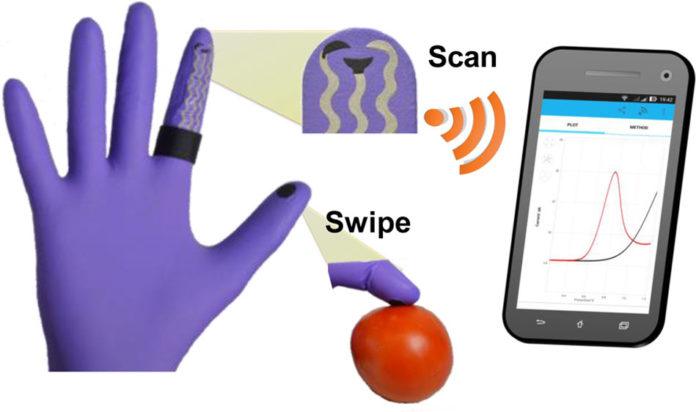You might have seen the farmers that they wear gloves while applying pesticides on crops. Yes, because it is necessary for them to wear protective clothing to protect themselves from side effects of pesticides. Wearing protective clothing prevents farmers from exposure of pesticides on the skin. Almost 90% of chemical exposure occurs over the skin. So to prevent from skin exposure, farmers covers themselves by using flexible rubber gloves, long-sleeves shirt, shoes etc.
The pesticides consist of organophosphate, a substance that kills unwanted bugs on the crop. But it also can harm humans. Related compound- organophosphate nerve agents has very effective results on crops. They also are highly toxic and can prevent the nervous system from working properly. In short, they make people ill, who are exposed to them. So, to detect such compounds, scientists have developed new flexible glove-based biosensor i.e., lab-on-a-glove.
This flexible glove-based biosensor comes with highly stretchable printed electrode system. Scientists developed it as a wearable point-of-use screening tool for defense and food security applications.
It carries out the sampling and electrochemical biosensing steps on different fingers. The thumb is used for collecting the nerve-agent residues. And the index finger is used to immobilize enzymes. There are the flexible stress-enduring inks present in this flexible gloves-based biosensor to print the collection and sensing elements on these fingers. The user needs to swipe the thumb of the glove on a surface and then touch the index finger for the electrochemical analysis. When the thumb touches the index finger, the gloves detects the collection of nerve-agent residues.
For real-time results, the voltammetric data are sent via a reusable Bluetooth device to the users’ mobile device.
Joseph Wang from the U.S. Centers for Disease Control and Prevention said, “Testing showed that the glove-based biosensor could detect organophosphate pesticides methyl parathion and methyl paraoxon on various surfaces. For example, glass, wood and plastic—and on produce.”
According to researchers, the sensor is useful in both security and food safety settings.
